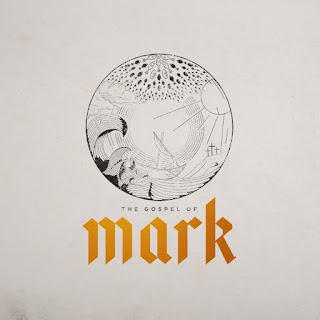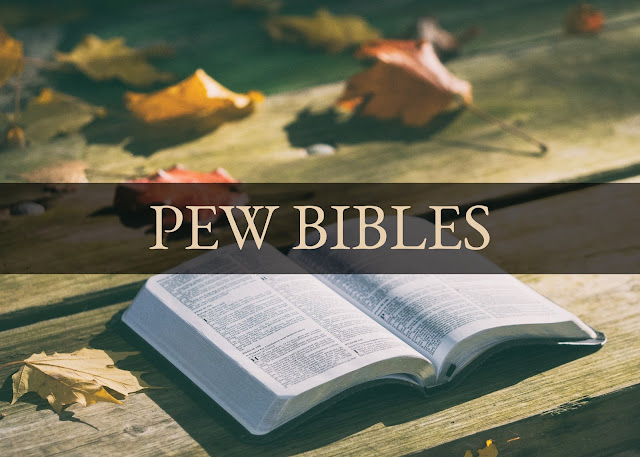Read, Respond, Review (Bible Study Method)
I'm currently teaching a series on the Gospel of Mark, and one of the challenges is that we're trying to get through the entire book in 13 weeks.
Covering a lot of material—often a book or section of books—is called a "survey" class. You survey the landscape of the text, maybe visit a few key locations, but you don't have enough time to get the full experience. (Imagine traveling to visit France. If you only had a week to visit, how would you plan your travel? This is the same challenge we face as teachers of Biblical text.)
In the past, I've used some different methods for survey classes, or some combination thereof:
 After we discuss the section as a whole, I went through each story, summarizing, pointing out background information, and explicitly talking about the connections between stories. This gives me a chance to cover anything I missed, while keeping each story within the larger framework of the week. (I will also throw out key discussion questions, as they become appropriate, without requiring a discussion question for each story.)
After we discuss the section as a whole, I went through each story, summarizing, pointing out background information, and explicitly talking about the connections between stories. This gives me a chance to cover anything I missed, while keeping each story within the larger framework of the week. (I will also throw out key discussion questions, as they become appropriate, without requiring a discussion question for each story.)
Covering a lot of material—often a book or section of books—is called a "survey" class. You survey the landscape of the text, maybe visit a few key locations, but you don't have enough time to get the full experience. (Imagine traveling to visit France. If you only had a week to visit, how would you plan your travel? This is the same challenge we face as teachers of Biblical text.)
In the past, I've used some different methods for survey classes, or some combination thereof:
- Outline/Overview - break the text into major sections, mention key points, but usually don't spend time reading much text. Often the text readings are focused on highlighting a moment representing the key theme of that section. (Example: going through the Minor Prophets in one quarter.)
- One Story per Section - Within a weekly section of text, pick out one story and spend most of your time on it. You're going deeper, but you're not getting the bigger picture. (Example: we had a sermon series on Luke, with rotating preachers, so each preacher had a chapter to cover. They typically chose one story within that chapter, instead of trying to cover it all.)
- Subsection - Choose a section of a larger text, and focus on it. (Example: instead of teaching all of Genesis, only cover one section, like pre-Abraham, Abraham, or Joseph.)
- Theme - Choose a theme of the larger text, and focus on it. (Examples: in Genesis, focus on "family" stories only; in a gospel, focus only on the stories unique to that gospel.)
- Homework - Choose one story, often the beginning one of a section, to discuss in class. Let the class take home more notes to read on their own time. (Example: a sermon series that focuses on one set of stories in a larger text, paired with a small group discussion guide for other stories.)
This quarter, I'm trying something new. At the risk of being ostentatious, let's call it the Read/Respond/Review method. (Disclaimer: I'm certain that this isn't new, but it's new to me!)
I divided Mark into 13 sections, but each week, we're reading the entire text for that week, then asking questions about it as a whole, then (if time) briefly discuss the different stories and how they worked within that larger section. Here's some more detail on this approach, and why it worked well:
Read/Respond/Review Method
Print out the text for everyone in class.
Format the text in an easy-to-read format, using a modern translation. (I formatted our reading in landscape, two-column, double-sided, keeping verse numbers but removing section headings. I also kept the paragraph spacing from the NIV.) This helps those who didn't bring a Bible, and it's a far better experience than reading the Bible on a smartphone app. (The limited screen makes it hard to see connective tissues across multiple stories. Even for a single story, most require scrolling.)
Before reading the text, ask yourself these questions:
- What sticks out to you? (What's new or surprising? Confusing? Startling? What keeps coming to the front of your mind?)
- What do we learn about Jesus? (This is a Gospel series, so this question might change with a different text. Alternative: "What do we learn about God?")
- How are these stories connected? (We're reading a section of text that covers multiple stories. But the original author intended these stories to be read in succession. What is the author trying to do by putting these stories in this order?)
- How is this story good news? (Again, a gospel series. I'd focus this question around the overarching theme of the text. Alternative: "What does this story mean for my walk with God?")

This changes our time of reading from passive to active. My class is discussion-based, and these questions help them know what to expect—and what to look for—as we read.
After reading the text, run through these questions across the entire text.
Before we break the text down into different sections, we discuss the questions we posed overall. (This is the Respond portion of the method.) This provides an opportunity for class members to notice things I planned to point out, which is always great when I can affirm their self-discovery of the text. It also allows them to point out things I hadn't considered, which is great for me!
Discussing the text as a whole also allows us to see the connective tissue throughout the section. For my last class, we read Mark 2:1-3:12. Jesus is constantly doing something good (healing, usually) that upsets the religious elite (by "breaking" their interpretation of God's laws), and it's clear that Mark is setting up a pattern. Using one of the other methods, it would've been less clear!
Review each story within the section.
 After we discuss the section as a whole, I went through each story, summarizing, pointing out background information, and explicitly talking about the connections between stories. This gives me a chance to cover anything I missed, while keeping each story within the larger framework of the week. (I will also throw out key discussion questions, as they become appropriate, without requiring a discussion question for each story.)
After we discuss the section as a whole, I went through each story, summarizing, pointing out background information, and explicitly talking about the connections between stories. This gives me a chance to cover anything I missed, while keeping each story within the larger framework of the week. (I will also throw out key discussion questions, as they become appropriate, without requiring a discussion question for each story.)
---
Do I get to dive deep into each story? No. But given the time constraints, I think this method works better. We still read every story. Members have the Biblical text in their hands. I'm able to give enough context to let the stories begin to work more deeply. And for the rest of the day or week, the stories have a chance to bounce around in the brain, percolating into something more.


Comments
Post a Comment
Please be careful that your comments are gracious!